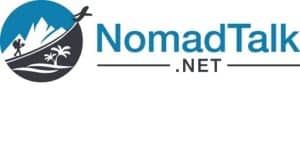If you’re just getting into freelancing then one of the biggest challenges can be, how do I set my fees? Charge too much and you may get no business. Charge too little and you’re going to end up working hard while going broke.
There are two common methods of charging for freelance work: hourly rates and project-based (also known as output-based) and they both have their advantages and disadvantages.
But before we get to how you calculate your fees; we need to look at some other factors that you’ll need to consider before you give your potential clients a number.

Table of Contents
What Are Your Costs Of Doing Business?
Going freelance is a fantastic thing. It means saying goodbye to your boss and working from wherever you want. It also means that you just became responsible for all of your expenses.
There are two sets of expenses that you’re going to need to look at carefully and the first is the costs of doing business.
How much are you spending on any or all of the following?
- Computer hardware. This includes printers, scanners, etc. as well as your laptop. If you have to buy it to operate your business, then the hardware cost goes here.
- Website hosting, design, etc. If you run a website to promote your business, then you’ve got to pay for it.
- Computer software. Whether you pay subscription fees or a one-off cost every now and again, every online business has software costs. You need to add them up.
- Internet, telephony and utility costs. You may be able to offset some of your household utility costs against tax if you’re freelancing in your own country. You can definitely put the Internet and telephony down against business costs, wherever you are.
- Do you have liability insurance? What does it cost?
- Travel expenses. These will be higher if you’re a digital nomad, but you still have to account for them.
- Professional membership fees. If the work, you do, requires membership of a professional body or regular certification then you’d best be sure you can pay for that.
- Marketing costs. You have to find clients and that costs money, sadly.
- If you have to pay taxes, then you’d better pay them. We’ve found that it can get ugly if you don’t.
There are, of course, likely to be a bunch of other business expenses we haven’t touched on here. If you can’t work out what they are – we’d recommend putting an extra $200 as a monthly line item marked “miscellaneous”.
What Are Your Actual Costs Of Living?

Not only do you have to cover your business expenses, but you need to be able to live too. That means working out what it costs to be you.
- Food
- Clothing
- Toiletries
- Cleaning products
- Rent
- Utilities
- Car, bike, etc.
- Insurance
- School fees
This list could go on all day and we might never get to the end of it. Only you can know what you have to spend money on each month to keep your life moving. The easiest way to find out what you spend money on is to go back through a year’s worth of bank statements and try and identify each line item.
A Simple Rule: You Have To Charge More Than You Spend
Now that you know the costs of being alive and running your freelance business, you know what the bare minimum you must earn each month is. Drop below that and you start to eat into your savings, drop below often enough and you’ll be broke and homeless.
What Kind Of Client Will You Be Working With?

Let’s be blunt about this:
Small businesses and, in particular, sole traders generally don’t have very much money and they are loathe to pay the market rate for anything.
Large businesses, on the other hand, have managers spending company money and not only will they pay market rates – if you can convince them that you’re worth it, but they’ll also spend more money than the market requires.
There is an important lesson for your pricing strategy in here and it’s why many freelancers don’t advertise their prices: you can win business from both sets of clients, you can charge a small business less and a large business more. That’s because you know how each business spends its money.
The easiest way to get a handle on what might be reasonable is to talk to the client and ask the magic question; “What kind of budget do you have in mind for this?” Many clients will pony up the information immediately.
Some will not.
For those, go and research their business – how big is it? What kind of partners do they work with What sector do they work in? The more data you have, the more you can easily estimate what they’d be willing to spend before you give them a quote.
What Kind Of Work Will You Be Doing?
The more routine the work, the less a client will pay for it. I get paid much better to write a book than I do to write the same number of words in articles. Why? Because it’s more skilled to write a book and ensure it flows over several hundred pages than to write an article that only has to work over 1,500 words.
Also, there are far fewer people out there that have written books (to date – I’ve written a dozen books, all for clients, none of them have my name on the cover) so you have much less competition for book writing than for article writing.
You have to think about the project and think about how challenging it will be. You can charge more even if the amount of work is similar for complex projects than you can for simple ones.
What’s The Bottom Line Benefit To The Client?
Think about when someone buys a website. Why do they buy it? What do they want from it?
Well, there are many reasons to run a website in business but the two most common are:
- To verify that the business is real and to give it authenticity – they call this the “electronic business card” website
- To conduct marketing and to make sales online to improve profits
You can see instantly that a client is more likely to pay more for a site that makes them money as compared to a site that acts as confirmation that they exist.
If you understand what your client wants to do with your work, you can price it according to the value that it brings.
Let’s say you know that your client intends to make $5 million a year in sales through their website – you’d charge them more than $2,000 on that basis, right? Well, you should.
If you can quantify the Return on Investment (ROI) of your work to a client then you can often work out how to price that work effectively.
What Experience Do You Bring To The Table?
The more experience that you have, in theory at least, the more that you can charge for your work.
If you’ve just walked out of design school, it’s unlikely that you’ll be picking up $2 million for a rebranding exercise for a multi-national. You’re an untested quantity.
Give it 20 years though and that’s the kind of work you might want to be aiming for. Having experience brings you options.
However, again it depends on the project. If you’re selling a logo to a small business, it doesn’t matter how good you are and how much experience you have – they’re still only going to pay so much for it.
The Two Pricing Models Freelancers Commonly Use: Explained
The Hourly Pricing Model

Some freelancers like to sell their time on an hourly basis. The advantage of this approach is that if you know what you charge per hour, you know how many hours per week that you need to sell in order to cover your expenses and how many more to make a reasonable profit.
The disadvantage is that you cannot charge an unreasonable hourly rate and therefore you may be leaving money on the table when a client is prepared to pay more for a finished product than they would for the hours you put into making the product.
We’d recommend hourly pricing on projects that are long, complicated and on which you have no idea when they will be finished. A lot of coders and programmers work on hourly rates for this reason. It’s hard to guess at how many hours you might need to build a satellite navigation system from scratch.
We’d recommend avoiding this model if you work on shorter projects that you understand fully how long they will take. You tend to find that when you first start freelancing that you’re not working at your maximum potential – so when you take on a client for a 1,500 word piece, it may take a day to write – but a year later it may only take a half-day and two years later only a couple of hours.
If you’re charging hourly… you lost money as you got better. If you charged a piece rate for a finished article, however, you can now make 4x what you earned when you began writing.
Calculating an hourly rate is fairly simple.
Add up your expenses, add a profit margin (because that pays for the things you want, vacations, etc.) and then divide by 48 weeks (which gives you a month for vacations) and then again by 25 hours (you need time, unpaid, to market your services and administer your business, so don’t make this 40 hours).
Once you have your number, you can compare it to rates out there in the real world. If you’re in the right ballpark – you have your hourly rate.
If you’re too low compared to what’s out there – put your rates up.
If you’re too high compared to what’s out there, then you may need to look at your expenses and profits and see how to trim them. The exception to this is when you are a market leader or household name in your field, then you can charge more than the market does.
Project-Based Pricing
This can be a little more complicated to price but in the long run, project-based pricing means that you get paid more every time that you get better at your job.
As long as you know what goes into the project, you can get a pretty good idea of how much the market will bear (often asking your client about their budget can help work this out) and then you can put together an acceptable quote for an end product.
To begin with, in your freelancing career, project-based pricing won’t be much better than hourly pricing but give it 5 years and it should offer substantive advantages, particularly with clients who’ve been with you for years as you’ve improved.
If you need ideas for project-based prices – check out your competitor’s websites, many of them will have standard packages they offer for standard prices. It’s a great way of benchmarking yourself against the market too.
Don’t Compete On Price
One last piece of advice. It’s a bad idea to compete on price in the long-term. It’s fine to enter a new market with a special offer to win over a couple of clients but make it clear that this is a short-term special offer and raise your rates as soon as you can to the market rates.
Freelancers only have one product to sell – their time. By lowering your rates, you are lowering your maximum earnings, permanently. That means working harder than your peers for less money and eventually burning out. This is a bad way to build a business.
Real clients know that you’ve got to pay the bills and earn a living. They don’t try and squeeze you at every turn for every penny that you’ve got. Bad clients, on the other hand, are shameless in their pursuit of draining you of blood. Don’t fall for it. It’s not worth working for peanuts – you’d be better off getting an office job where at least you’d get benefits and a salary.
Conclusion

There are two standard means of pricing your freelance work: hourly pricing and project-based pricing. Before you set your prices, it’s a good idea to consider your expenses, your clients’ needs, and your own experience.
You can definitely earn more as a freelancer in the long-term by doing project-based pricing though hourly rates remain the best way of approaching projects with no foreseeable end dates.
Don’t be shy about what you charge. Clients will judge your prices not on their dollar value but on the value that you bring their business.
It’s a bad idea to try and compete on price in the long-term.
